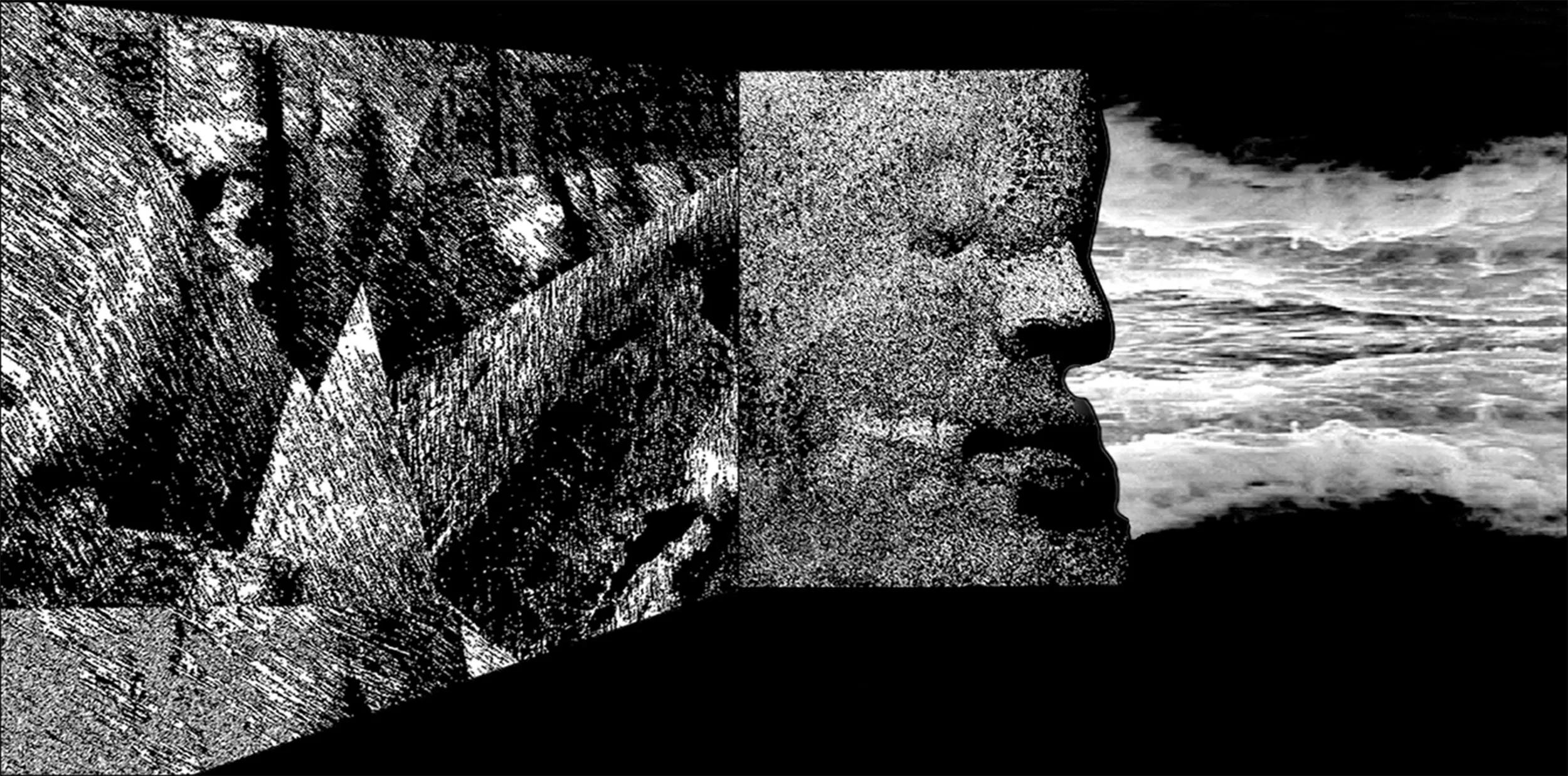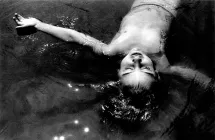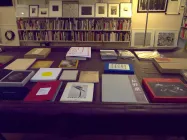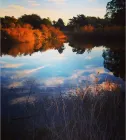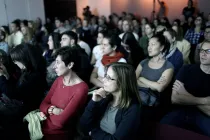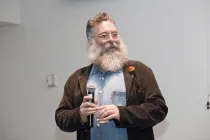All roads lead to collage. At least it often seems that way.
A throwaway form that began its life in art history as an offshoot of Picasso and Braque’s Cubist explorations, collage broke the ancient ideal of stylistic unity, and with it the disjunctive mood officially entered the syntax of art: the urge to slash and burn, to rip and tear, to cut and paste pieces into something joltingly different and new, surfaced.
In an age of dissonance artists seemed to prefer Humpty Dumpty after the fall.
Closer to poetry than to painting, collage at its best offers even the unskilled the possibility to discover the creative, associative properties of their own mind. Further it gives people permission to do “bad” things: cut up books, desecrate images, play with junk. The tactile, sensuous pleasures of paint are not excluded, nor are the conceptual virtues of text. The closest approximation to the creative process itself, collage can incorporate any material at all: paint, photography, architecture, cities, or lives. Mirroring both associative thought and emotional sensibility, it molds itself after the pattern of its maker more faithfully than any other medium save drawing. And because it can subsume all other media, collage has an incredible expressive arc that swings from the violent iconoclasm of Dada (Raoul Hausmann, Hannah Höch) to the elegant whimsy of children’s books (Beatrice Alemagna, Eric Carle).

Reacting to the impact of the computer and the Internet, photography is in the midst of a historic shift in which the photographic image is no longer synonymous with camerawork. Add to that the computer’s intrinsic aptitude for collage, for mixing it up digitally, and you have what almost amounts to a coup. The dazzling possibilities of post production have transformed photography from a primarily perceptual to a more deeply creative medium.
Covertly in the case of documentary and news photography, overtly in the case of fine art photography, digitalization has turned most images into one type of collage or another. The collage impulse can be found in most staged photography in which non-rational juxtapositions dominate. In fact any departure from normal realism can be viewed as collage-influenced. Whether you are collaging in front of the camera, or merging layers in Photoshop, the essential impulse to bring together disparate elements in a new whole is the same.
In short, photography is becoming a subset of collage.
This new life in collage has encouraged photographers to mock their medium’s truth telling pretensions. For collage is nothing, if not fiction. Photographers such as Helen Chadwick, David LaChapelle, Joan Fontcuberta, Penelope Umbrico, Thomas Ruff, Nic Nicosia, Mariko Mori, Mary Mattingly, Idris Khan, Didier Massard, Annette Kelm, and scores of others, create images defiantly in the face of common sense reality.

From the beginning collagists were particularly drawn to the detritus of modern life. Newspapers, magazines, ticket stubs, cigarette wrappers, advertisements, and, of course, photographs—cast-off materials not of value in the strict hierarchy of the art world were their preferred content. As such it began as a sort of anti-art mocking the permanence and importance of museum art. Certainly it was seen that way by the Dadas, who were the first to incorporate photographs into their collages in a large way. Furthermore they were devoted to junk. Merz, that most sublime of collagists, Kurt Schwitters, called this second major source of material being channeled into the river of collage.
Unlike Cubism which was primarily concerned with formal and spatial problems, Dada was implicitly political. A violent reaction to the disaster of World War I, Dada needed the sort of identifiable, worldly content most readily found in photography. For them, as for many others, a photograph was a fragment of the world, a classifiable bit of reality, the perfect doppelganger upon which to wreak havoc. With the widespread use of the halftone process, published photos became de facto public property. This abundance of “free” material delighted collagists then, just as an even greater abundance available on the Internet delights them now. Small wonder that such opulent resources have combined with the new digital ease in compositing to fuel a renaissance in collage-making that is invading all media.

Mustering all the irreverent energies they possessed, Hausmann, Höch, John Heartfield, and others cut and hacked away with a savage, surgical hand and a sharp, satirical eye. Quite possibly the most inventive of the lot, Höch was particularly interesting. Using mismatched body parts, paint, and a devilish wit, she mocked gender roles and social expectations, extending Dada iconoclasm to women’s stratified existence. She has never been equaled for her deft, witty, and penetrating exploration of gender, those surgical cuts that juxtapose large heads and small bodies, primitive masks with modern matters. Arguably the first feminist artist, she began her life as an artist in the textile industry, an area closely associated with women.
But well before Dada, before Cubism even, Victorian scrapbookers, the largely unsung heroines of collage, created some the most delightful, whimsical examples of the form. In fact, the work of such women as Lady Filmer and Viscountess Jocelyn remain a major part of that hidden stream of collage: folk art. Especially women’s folk art. Patchwork quilts, for example, are nothing if not collages of scraps sewn together. Other examples can be found in ceramics and painting, though it was in the scrapbook that women particularly excelled, combining photographs, watercolor, and text with brio. Domesticity rather than worldliness is celebrated in these collages. As such it is the complete opposite of Outsider art; it is, in fact, Insider Art, redolent of women’s lives inside family and home. This Insider Art was, of course, outside the commercial and professional worlds, making it a kind of folk art that mirrored the domestic activities dominating women’s lives, such as the task of organizing and decorating rooms, an ability that may well be funneled into installation art today.
The Victorian scrapbooking impulse was all but forgotten when Dada violence merged with Freudian introversion in Surrealism, the movement lead with an iron hand by the poet-pope, André Breton. The Surrealists loved dreams, hallucinations, altered and aberrant states of all kinds, including psychosis. Among the first to recognize the value of the art of the insane, they were instrumental in bringing this work into the canon of acceptable art.

Dedicated to the pursuit of the unknown, Surrealist research emphasized the process of discovery over the crafting of objects. Ergo collage, the perfect surrealist medium. At first unsure whether a Surrealist art was even possible, Breton was an avid practitioner of ‘the exquisite corpse,” the collage game loved by the group in which each participant blindly added their bit to the whole.
The supreme master of Surrealist collage was, of course, Max Ernst who, if he did not often use photographs, used the wood engraving copies that preceded them in the mass media. The disjunction and violence that was material and social in Dada becomes psychological in Ernst whose elements merge seamlessly on the picture plane. In a frenzied five weeks he created the first of his collage “novels” out of a cache of old catalogues. Here the jolt takes place in the mind of the viewer who is treated to some of most bizarre and inspired imagery ever created. Intensely sexual, primal forces encounter each other in a nightmarish narrative whose plot may be obscure but whose intent is clear, his winged and reptilian beings personifying the quality of the marvelous the surrealists so prized.
With Surrealism, collage as a process and a way of thinking enters into the mainstream of art and into the awareness of a certain segment of society. No longer just the physical act of cutting and pasting, but the mental act of combining unlike elements, along with a taste for the bizarre, the disjunctive, the out-of-joint and out-of-control begins to establish itself in modern art and life. The jolt Comte de Lautréamont lauded in his famous remark extolling the wonder of “the chance encounter of a sewing machine and an umbrella on an operating table” becomes a modern addiction. Avant garde art turned and continues to turn on this axis of the strange and the original, with its petit frisson of shock.
As a recorder of surfaces the camera would seem antithetical to the Surrealist search for what lay beneath the surface of ordinary life. But in the hands of Man Ray, photography, too, began delivering images filled with chance encounters and unexpected effects. Not only in his photograms and collages, but also in his more commercial fashion work the surrealist sensibility was evident. Fashion photography, in fact, latched onto Surrealism with great gusto during the 1930s and 1940s, bringing the disjunctive look of collage into the mainstream.
Yet, during the great era of photo reportage, the collage sensibility remained a sideshow, practiced by just a handful of photographers such as Vogt, List, Beaton, Maar, and Man Ray. By the 1990s photography was at the end of its perceptual heyday, its hallmark someone staring straight into the camera looking as if they were not alive. The interchangeability of people and dolls, robots and humans, typified the emotional exhaustion of the period, suggesting that photographers were suffering from a kind of serial depression.
Though people like Robert Fichter and Les Krims had brought a collage sensibility into the medium a generation earlier, it was really Cindy Sherman in the 1970s who sounded the death knell of ordinary vision, at least in the gallery and museum worlds. Her work brought three things firmly into focus: fantasy, narcissism, and artifice.
Her first important series, Untitled Film Stills, celebrated illusion. This may look real, these images said, but they are illusions. In the post-perceptual photography that followed Sherman’s breakthrough series, naturalism was a mere smokescreen, illusion rampant, the viewer in on the game. While a true collage quality did not enter her images until later, when her heavy use of makeup and prosthetics brought the element of the grotesque fully into the picture, it is impossible not to notice the slow draining away of human feeling in her work. From the vitality of the Untitled Film Stills, the work passed into a doll maker phase of social satire and caricature. The protagonist (Sherman) turned into a thing. A collaged thing.
In Sherman’s wake the imagination broke loose in photography, successfully challenging the dominance of realism. All one need do is look at the work chosen by the Museum of Modern Art for its last few New Photographers shows to see how straight camerawork per se is increasingly relegated to an “also ran.” When it does manage to steal a few square feet of exhibition space, how disaffected and bland it tends to be.
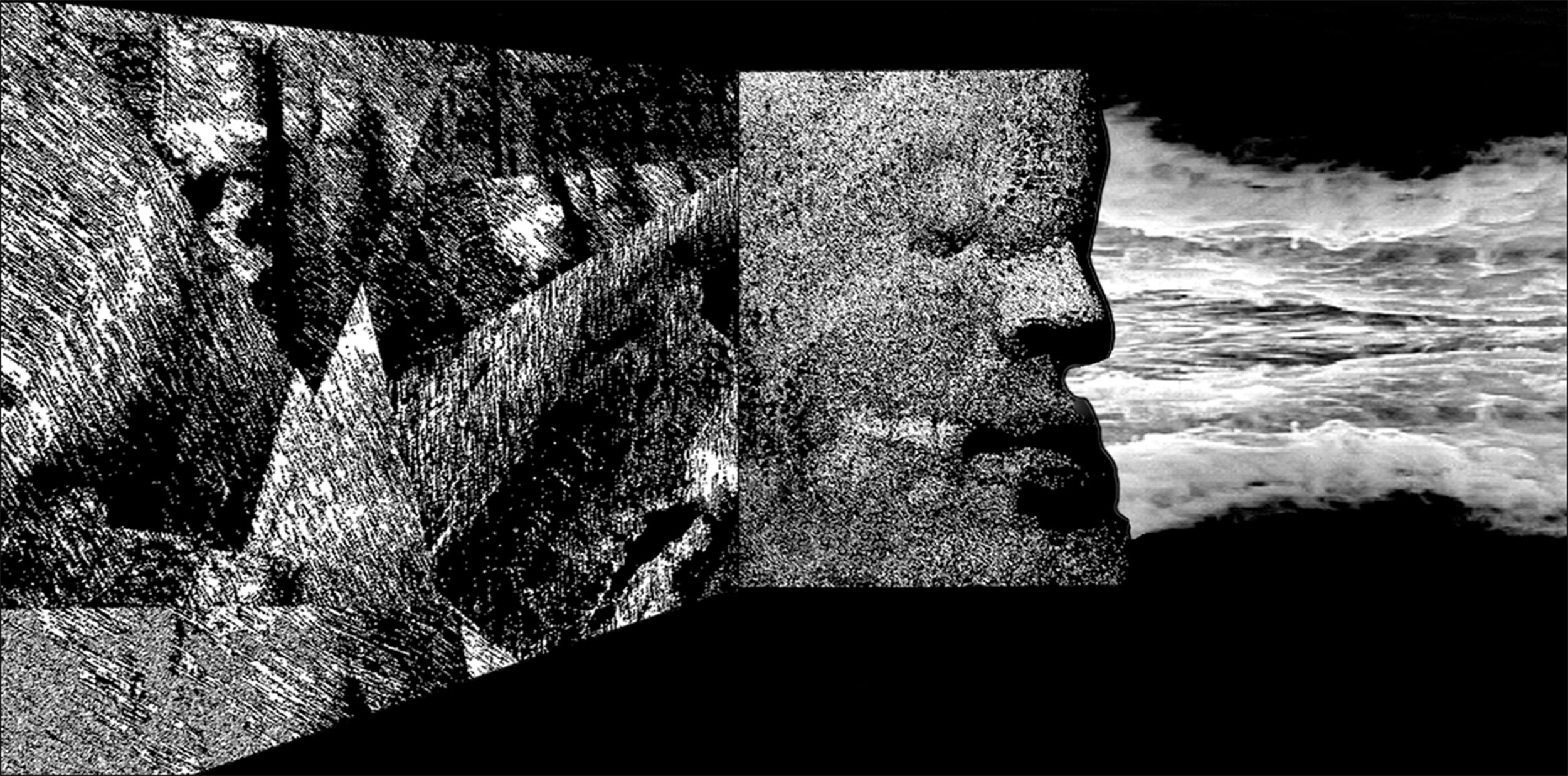
But by opening the door to the imagination, a collage sensibility, combining things that do not ordinarily go together, altering the way they look and the company they keep, almost inevitably permeated the medium. This can be seen in work such as Julie Blackman’s whose people have the stilted character of extremely slick and airbrushed puppets, as if they had been cut and pasted into existence. Today collage and pseudo collage, that is to say a collage-derived esthetic of displacement and disjunction, are seen everywhere, along with a preference for making real people seem unreal.
Though not everyone has embraced it, no one can totally escape it, so endemic is collage to modern life. Taking and remaking, juxtaposing and superimposing, layering and fragmenting, scribbling over and painting on, flattening or inflating space, dreaming and haranguing—the strategies of collage are almost endless because collage is the medium that embraces almost everything. And with its rise, imagination and feeling, fantasy and sarcasm, expressiveness and intellect have ample room to operate, to cut and paste their way into photography once more.


